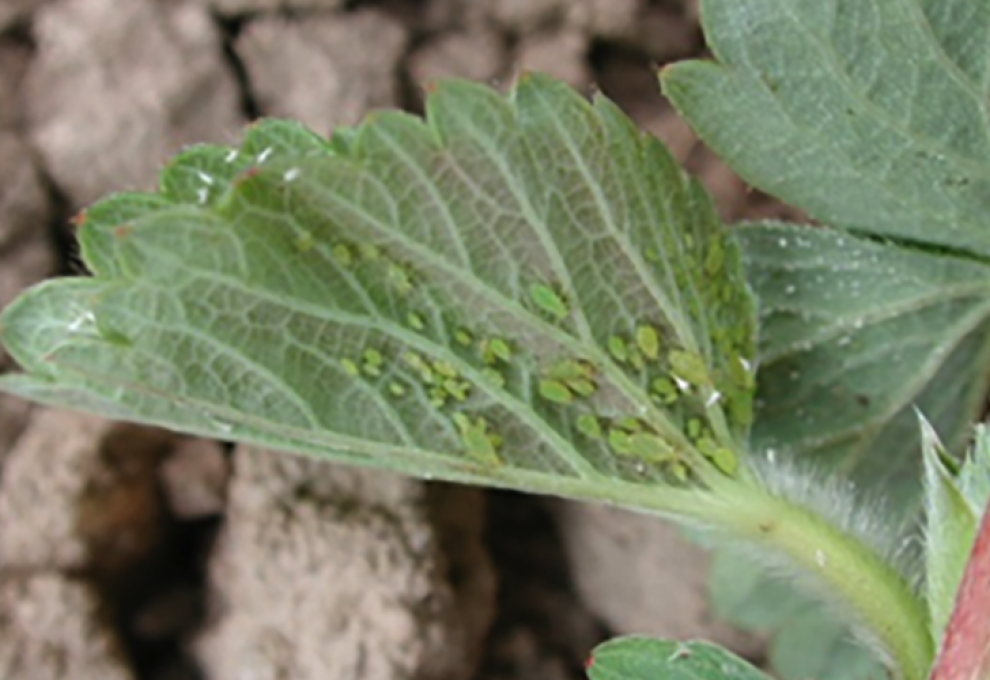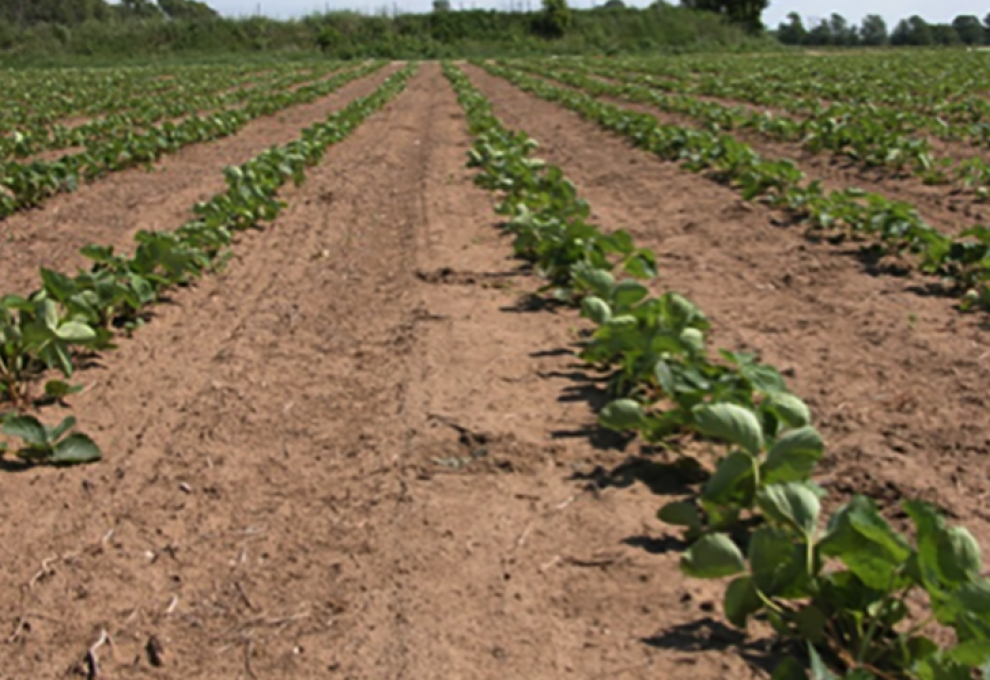

Strawberry aphid, Chaetosiphon fragaefolii, is the main vector of strawberry virus diseases in northeastern Canada. This aphid is a major pest which routinely requires control.If you don’t have a plan for managing the strawberry aphid, your fields will continue to decline year after year from virus diseases.
At a recent winter meeting, John Lewis, a berry crop specialist with Perennia, outlined a virus management strategy that is working well in Nova Scotia.
• Reduce inoculum – remove older strawberry fields that are infested with viruses. These fields are probably low in vigour and patchy in appearance.
• Start new fields with clean plants from an accredited plant grower, and isolate new fields from sources of virus such as older fields, and wild strawberries.
• Monitor for vectors –aphids, whiteflies
• Control strawberry aphids during their flight period.
Most growers in Nova Scotia are using this strategy and as a result, Lewis reported a significant decline in virus levels over three years.
What’s your plan to monitor and control strawberry aphids?
When to spray for aphids:
• Overwintering aphid eggs begin to hatch in early May. Check for eggs on the lower leaf surface of overwintering strawberry leaves. If eggs are easy to find, they should be controlled after all aphid eggs have hatched but before aphids begin to fly around to new places in the field.
• Aphids begin to fly early to mid- June and the flight period can last for six to eight weeks. Aphid monitoring and control is required throughout this period. Check for aphids weekly to know when your fields are most at risk. Collect 60 new, unfolded or partially unfolded leaves from strawberry plants throughout the field, and determine the number of aphids per leaf. Economic thresholds have not been determined. However, because aphid populations can build quickly, try to keep populations below 15 aphids/60 leaves. This is especially important in new plantings!
Insecticide options for strawberry aphid control:
Cygon 480-Ag and Lagon 480E (dimethoate, Group 1B): These systemic insecticides are very toxic to bees and should not be used when white buds or bloom are present. These products are economical and effective, and good options for non-bearing plantings. Use of Cygon 480-Ag and Lagon 480E during the pre-bloom period will also control tarnished plant bug adults. These broad-spectrum insecticides will probably have some activity on leafhoppers, leafrollers and clipper weevils.
Thionex 50 W (endosulfan, group 2): This product has provided poor to mediocre control of aphids in recent years. It has a seven-12 day re-entry period and will not be registered after 2016. When targeting aphids, use Thionex 50 W only when aphids and tarnished plant bug are present together. Re-assess control and be prepared to apply another aphicide if needed.
Admire 240 F and Alias 240 SC (imidacloprid, group 4A): These systemic insecticides are highly toxic to bees. They can be applied at different rates, as a high volume spray to the soil or (Admire only) as a foliar spray. The soil applications will provide good aphid and leafhopper control for approximately three weeks, but will limit the use of other group 4A insecticides for the rest of the season. For example, if you apply Admire or Alias as a soil drench, you should not apply Admire, Assail, Clutch or Actara for any pest for the rest of the year. However, they are a good choice in new plantings where white grubs could also be a problem.
Assail 70 WP (acetamiprid, group 4A): This locally systemic insecticide is moderately toxic to bees. It is also labelled for tarnished plant bug (at the high labelled rate) and leafhoppers, so it is a good choice when these pests are also a concern.
Sivanto Prime (flupyradifurone, group 4D): This is a recent registration and is expected to provide good aphid control. Unlike most group 4 insecticides, Sivanto is considered safe to beneficial insects and bees, although it should not be sprayed directly on bees when they are working. It can be used in rotation with other group 4 insecticides if there is no other option. It has no known activity on strawberry pests other than aphids, although it controls leafhoppers and whiteflies on other crops. This should be a great product to use in rotation with Beleaf.
Beleaf 50 SG (flonicamid, group 9): This product provides good control of aphids, is safe to bees and beneficials, and will also suppress tarnished plant bug (at the high labelled rate). Although aphids apparently stop feeding within hours of being treated, they might take a few days to die. This is a great product to use in rotation with Sivanto.
Malathion, Mako, Decis, Matador, Rimon: These products do not control aphids in strawberries!
Monitoring and control of strawberry aphids is an important part of a strawberry pest management program. Weekly scouting and three to five insecticide applications a year are part of the “new
normal” and important for virus management in strawberries.

Add new comment